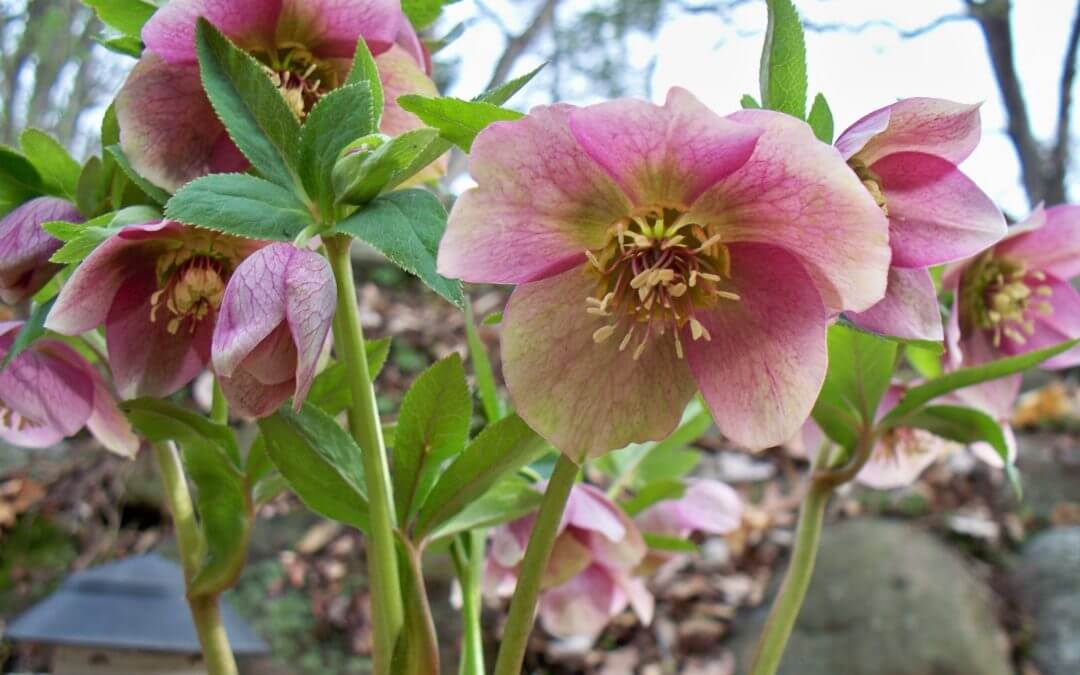When I first started gardening my priority was to plant flowers that I could cut, that were colourful and showy. I relied a lot on standard annuals and perennials to achieve my goals. I also planted only a few of each type in order to have as much variety as possible. I think a lot of gardeners start that way and then gradually transition to gardening more in zones such as treating the shady area of your garden as garden unto itself and using the most suitable plants for that area. Working with and not against Mother Nature is a huge lesson that each gardener must learn themselves. Once I found a plant that excelled in such an area I learned to go with it and found that I could still have diversity by exploring the many varieties within the same species. I remember the first year I was introduced to Hellebores; it was the plant of the year at Canada Blooms. I had heard of it before this and seen it occasionally in gardens but had never seen it used on such a large scale. As a volunteer that year I was lucky enough to take a few home and try them out in my own gardens. Well I have certainly became a champion of this plant and I now have seven different varieties and must admit when the catalogues come I am still longingly looking at these plants to see what I can add to my collection. What makes them such a great choice for the garden? To start with they are one of the first plants to bloom in the spring, with some varieties pushing up and beginning to bloom as the snow is still melting away. They tell us that spring is on its way and what could be better than that? The “flowers” are actually sepals and therefore are extremely long lasting, some up to six weeks. In the past these flowers were subtle in colour and mostly nodding in form so they were better located in a raised planting area where they could be better appreciated. Recent hybridizing has brought us upright blooms and more variety in colouring and form. We now have flowers that are solid, speckled, spotted and streaked with single, anemone and double blooms with a range of colours and pattern on their leaves to match. Like any plant, proper siting and soil preparation will ensure a healthier plant. These are long term perennials and therefore well worth the extra initial effort you may need to put in. Hellebores prefer a shady location, with rich organic soils that don’t dry out. In the spring remove the spent leaves and mulch with organic material and leave the rest to them. Depending on the variety you plant the leaves may be herbaceous or evergreen. I’ve learned to appreciate the subtle beauty of the this plant and recently I was pleasantly surprised to see this plant showing up in flower arrangements and available for sale as a cut flower. With each plant being floriferous in nature it’s easy to cut and bring some inside to get an early start on spring and to appreciate that beauty does not always have to be bold to be beautiful. By: Sue Montgomery, OALA, CSLA
Recent Posts
Archives
- July 2017
- March 2017
- February 2017
- January 2017
- June 2016
- May 2016
- April 2016
- March 2016
- February 2016
- January 2016
- September 2015
- August 2015
- July 2015
- May 2015
- April 2015
- March 2015
- February 2015
- January 2015
- October 2014
- September 2014
- August 2014
- July 2014
- May 2014
- April 2014
- March 2014
- February 2014
- January 2014
- December 2013
- November 2013
- September 2013
- May 2013
- April 2013
- March 2013
- February 2013
- January 2013
- December 2012
- November 2012
- October 2012
- September 2012
- August 2012
- June 2012
- May 2012
- April 2012
- March 2012
- February 2012
- January 2012
- December 2011
- November 2011
- September 2011
- August 2011
- June 2011
- May 2011
- April 2011
- March 2011
- February 2011
- January 2011

